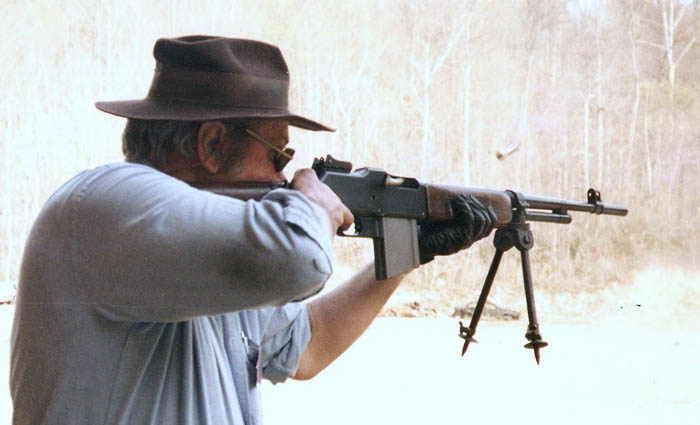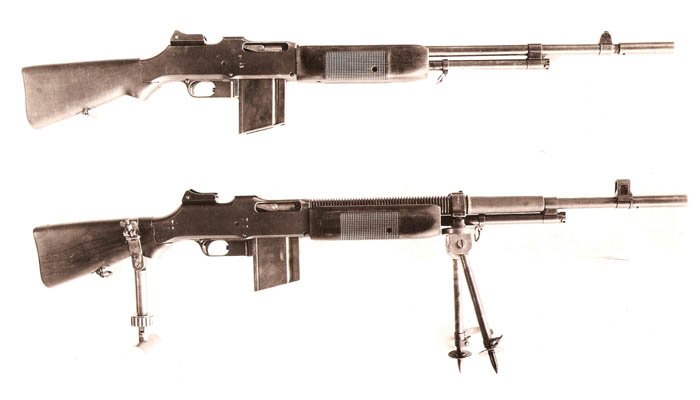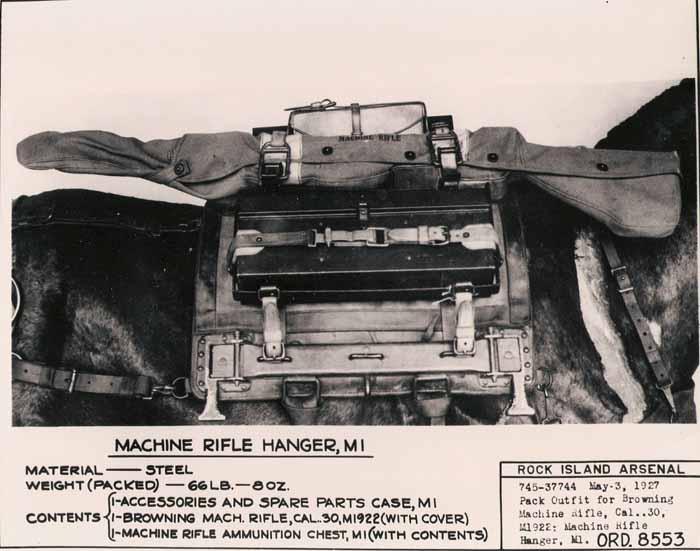By James L. Ballou

This has to be not only the rarest gun on the line; it is also the rarest BAR in private hands. The subject of this piece is the M1922 Cavalry Model BAR (Browning Automatic Rifle).
Very few, if any, survived the modification to M1918A2 that was so badly needed for World War II. On February 27, 1920, The Infantry and Cavalry Board called for a modified BAR that could take the place of the M1919A4 for cavalry deployment of a Light MG. It could be put in place instantly without preparation. The special BAR weighed fully loaded 25 pounds, where the 1919 weighed 31 pounds and had to be set up and then loaded. For the fast moving cavalry, this could be carried on mule or horseback for instant use. The short lived M1922 Cavalry Model had a finned heavy barrel with a bipod attached to the forestock. A monopod with an elevation mechanism was added to the buttstock. An improved rear sight cover was added with a sights adjusted to the new weapon. They actually considered dropping the 1919 series of light machine guns for this model.

There is a BAR with a heavy barrel at the Springfield Armory Museum that is heavily charred. Its 6.5 pound finned barrel is discolored from the heat. The tag states that John M. Browning personally put 5,000 rounds through it as rapidly as possible. The barrel was very similar to the one found on the M1909 Benet-Mercie model used at the turn of the twentieth century. Browning, as was his wont, had to prove the feasibility of putting so many rounds through his BAR.
They also developed special carriers and mounts for horse and mule carriers that held the BAR in a scabbard with four, three hundred round, metal boxes for loaded BAR Magazines. Most interesting and little known, the Board asked that forty, thirty-round magazines be developed to increase firepower. They also requested that special canvas carriers be developed top hold the 30-round magazines. Twenty were to go to Camp Benning, Georgia, and twenty to Ft. Riley, Kansas.

It is well documented that 40-round magazines were developed. There are photographs of them in France taken in 1917. Additionally, the Colt Monitor was advertised with 40-round magazines available. Where are these 30-round and 40-round magazines now? That is the big question. Keep looking – as there must be a few still out there.

| This article first appeared in Small Arms Review V13N8 (May 2010) |












